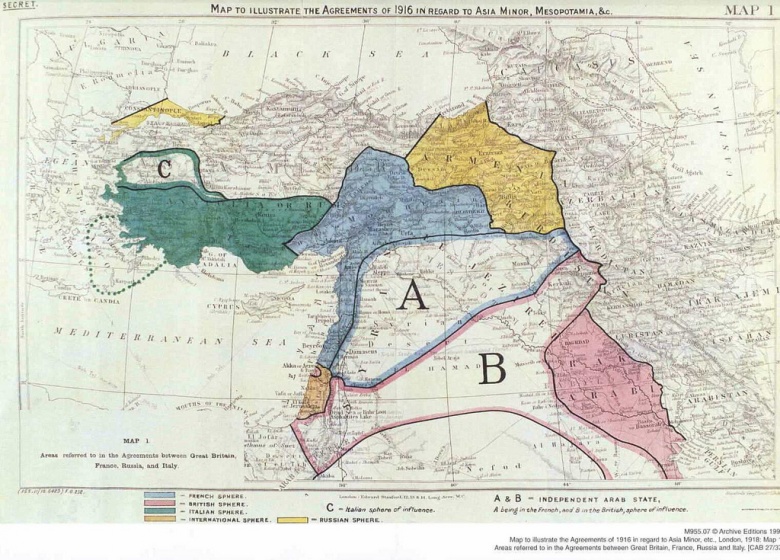Named after the two diplomats who helped shape this secret accord between the British and French governments during World War I, the Sykes-Picot Agreement planned to carve up the Ottoman Empire among the Allied Powers. Russia was also privy to the discussions, which started in November 1915 and was confirmed by the parties a hundred years ago today on 23 May 1916.
Essentially, France and Britain divided up the Middle East between them by means of a ‘line in the sand’ drawn on the map between Acre on the Mediterranean coast and Kirkuk in northern Iraq. Everything to the north of that line (Zone A) would be controlled by the French, and everything to the south (Zone B) by the British. France would get Syria and Lebanon, while Britain would have Iraq and Transjordan.
The agreement neglected to allow for the future growth of Arab nationalism, even though at that time the British government and military was using this to their advantage against the Ottoman Turks. It also ignored Kurdish and Zionist aspirations for statehood.
The Sykes-Picot map influenced the resolutions passed by the Allies at the San Remo Conference in April 1920. Its legacy has endured for almost a century until 2014, when Abu Bakr al-Baghdadi, the former head of al-Qaida in Iraq, declared the ‘End of Sykes-Picot’ in a widely circulated video when he proclaimed the founding of Islamic State on territory spanning both sides of the Iraq-Syria border.





